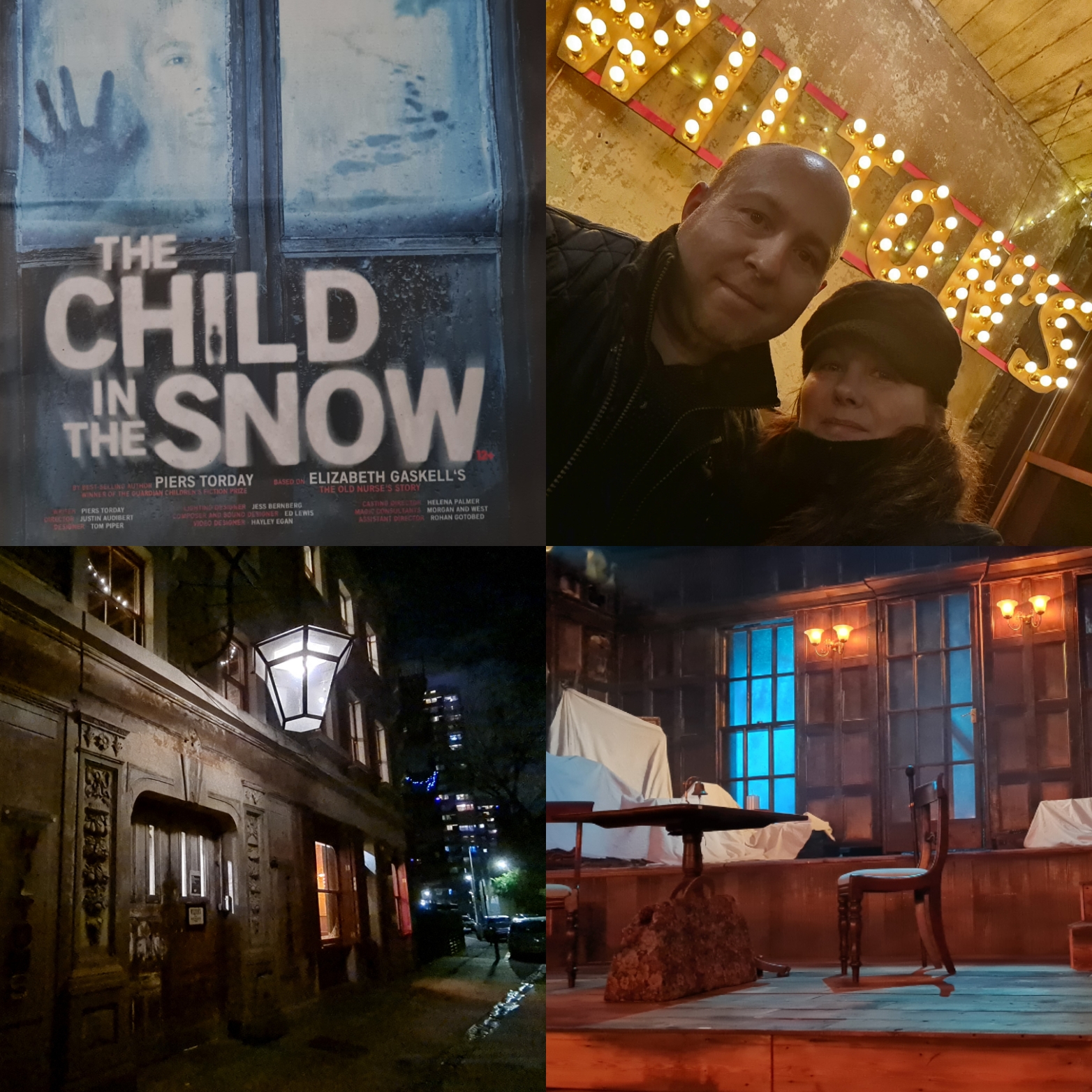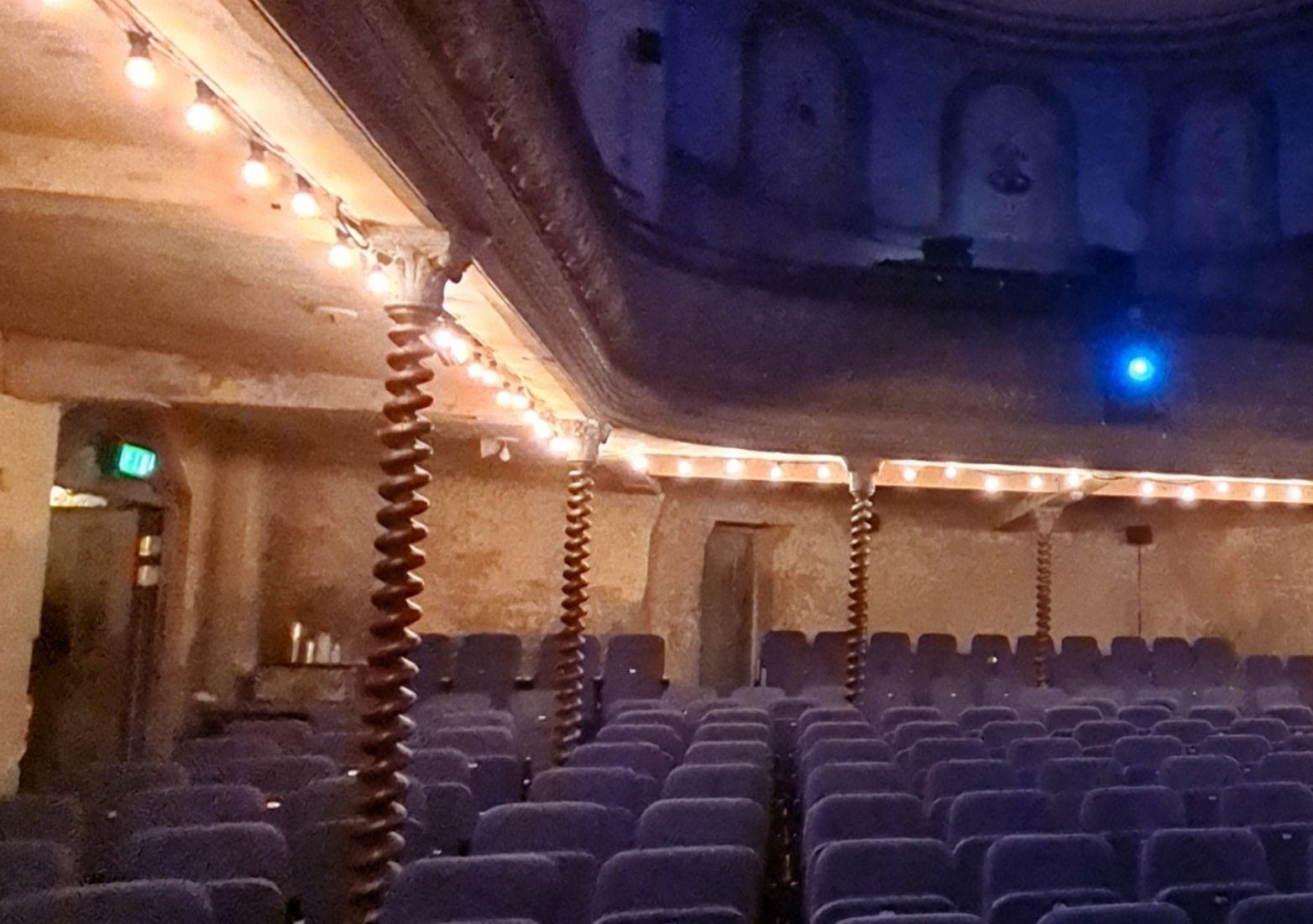Stage plays are a guilty pleasure of mine and to have watched one in such a surreal setting, a complete honour. ‘The Old Nurse’s Story’ by Elizabeth Gaskell is a gothic ghost story set in the Northumberland moors, which first appeared in the Christmas edition of the Charles Dickens’ Magazine ‘Household Words’ in 1852. The adaptation we saw, a play based on best-selling author Piers Torday, entitled ‘The Child in the Snow’ has a more modern setting—with the boundaries of class and gender remaining from the original story the characters are thrown into the turmoil of the aftershock of both the First World War and the Spanish Flu Pandemic. With just two women on stage, we are thrust into the past (in similar style to The Woman in Black). The nurse plays both herself as a young child and her present age and the older actress plays a medium and all other characters. It’s clever, spooky and all you’d expect of a professional performance.
Grace's Alley and the stage

Wilton’s itself extends back to the 1690's, when it opened to entertain East End's working people with West End glamour. Over the years it’s served as a music hall, Methodist’s mission and now presents a programme of plays and music entertainment all year, such as I’ve described above.
Wilton’s also have a colourful history and begun life as a row of individual houses along Grace’s Alley, the largest of which being an ale house serving Scandinavian sea captains. A mahogany bar was installed in 1826 which gave call for it to be named “The Mahogany Bar” and a concert hall was installed in 1839. For a short period during 1843 the ale house ran full-length plays (legally) and was known at The Albian Saloon.
Fire would destroy the majority of the music hall in 1877,
leaving only the four walls and ten barley twist columns that still support the
balcony to this day. Rebuilding commenced without too much change to the
original design but in in 1881 Wilton’s closed its doors—this was perhaps due
to the new build not conforming to fire regulations that had been bought in that
same year.
The iconic barley twist columns holding up the balcony

London’s East End became notorious for poverty, something religious organisations helped with. By 1888 Wilton’s was purchased by London’s Methodist Mission, who renamed it ‘The Mahogany Bar Mission’. Setting up a soup kitchen during the Great Dock Strike of 1889 they served a thousand meals each day to starving dockers’ families. As a Mission, the building remained open seventy years through testing times and those that served within its walls witnessed events such as The 1936 Mosley March (Battle of Cable Street) and the London Blitz. Throughout, the Methodists welcomed all without discrimination and campaigned against social abuses. They supported the community, especially those in need—and in particular children. The Mission closed in 1956.
After the war, Wilton’s was functional as a rag sorting warehouse and plans were made to demolish what buildings had been left standing in the area from all the bombing. A campaign begun, and the music hall was saved but it wasn’t until 1982 that the first repairs commenced. Although the doors didn’t open to the public until 1999, various filming took place in the meantime. What will interest a lot of my blog readers is that part of the 1990 film ‘The Krays’ staring Martin and Gary Kemp was filmed inside this incredible building. “This place used to be so great” they are of course referring to the snooker hall. If you watch that scene, the barley twists I mention above that survived the fire are clearly visible on screen. Additionally, with its walls painted red, Wilton’s became the Kray’s Regency Club ready for the cameras to capture the action.
Even Jim Henson’s Muppets have performed at Wilton's!
If you’re ever in the East End and fancy something a little different, up close and personal, then don’t forget about Wilton's Music Hall!
Donna's psychological crime thrillers are available from Amazon
by clicking here

